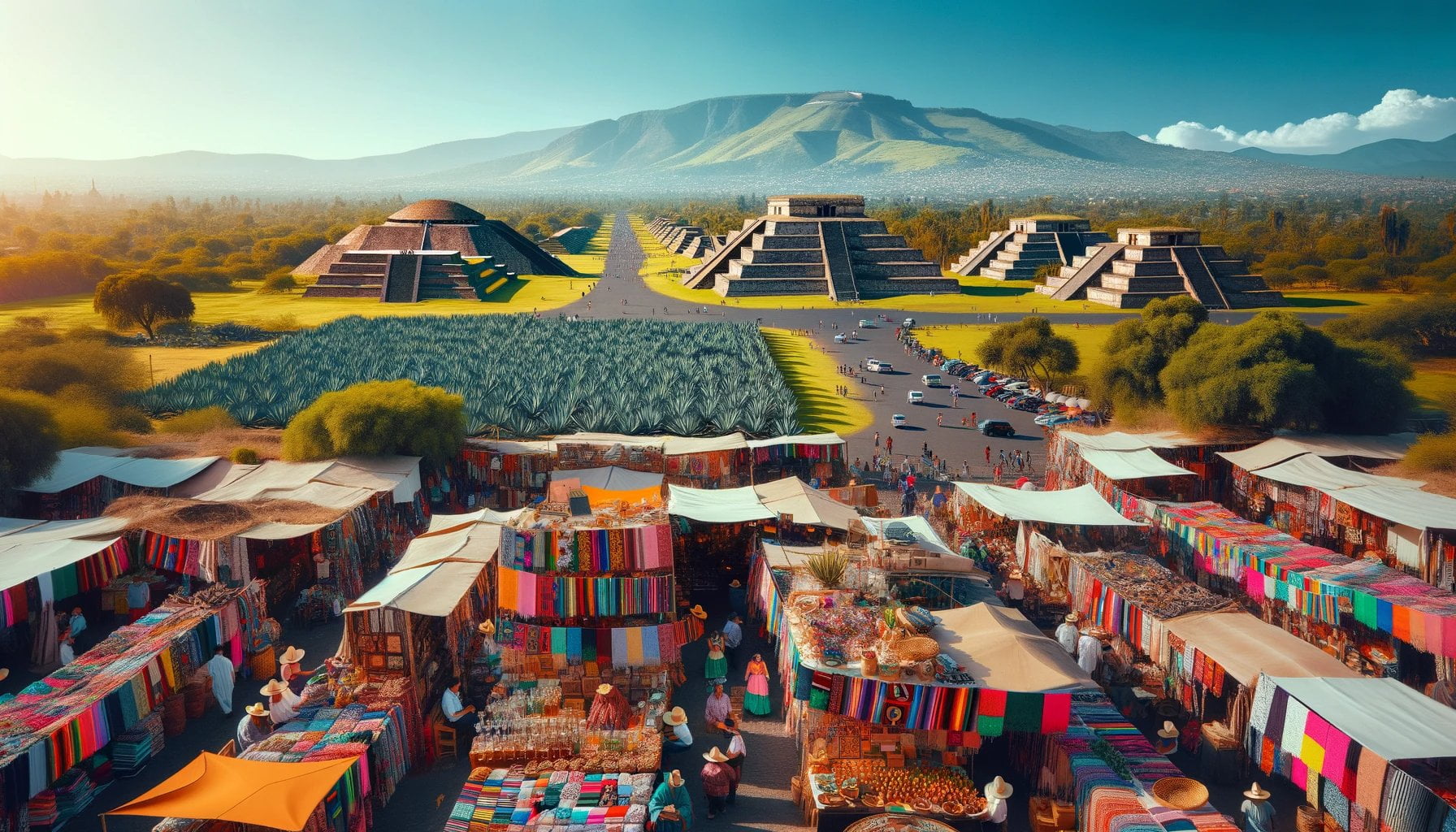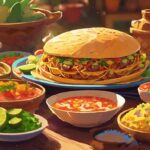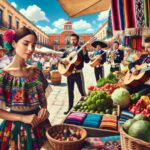Welcome to “Unveiling Mexico’s Heritage: 4 Fascinating Facts,” where we embark on a journey to explore the captivating country of Mexico. From its thriving economy to its vibrant culture, from its rich history to its bustling capital city, this article uncovers four intriguing facts that shed light on Mexico’s heritage and attractions. Whether you’re a travel enthusiast or simply curious about this enchanting destination, join us as we delve into the depths of Mexico’s diverse tapestry and uncover the hidden gems that make it so remarkable.
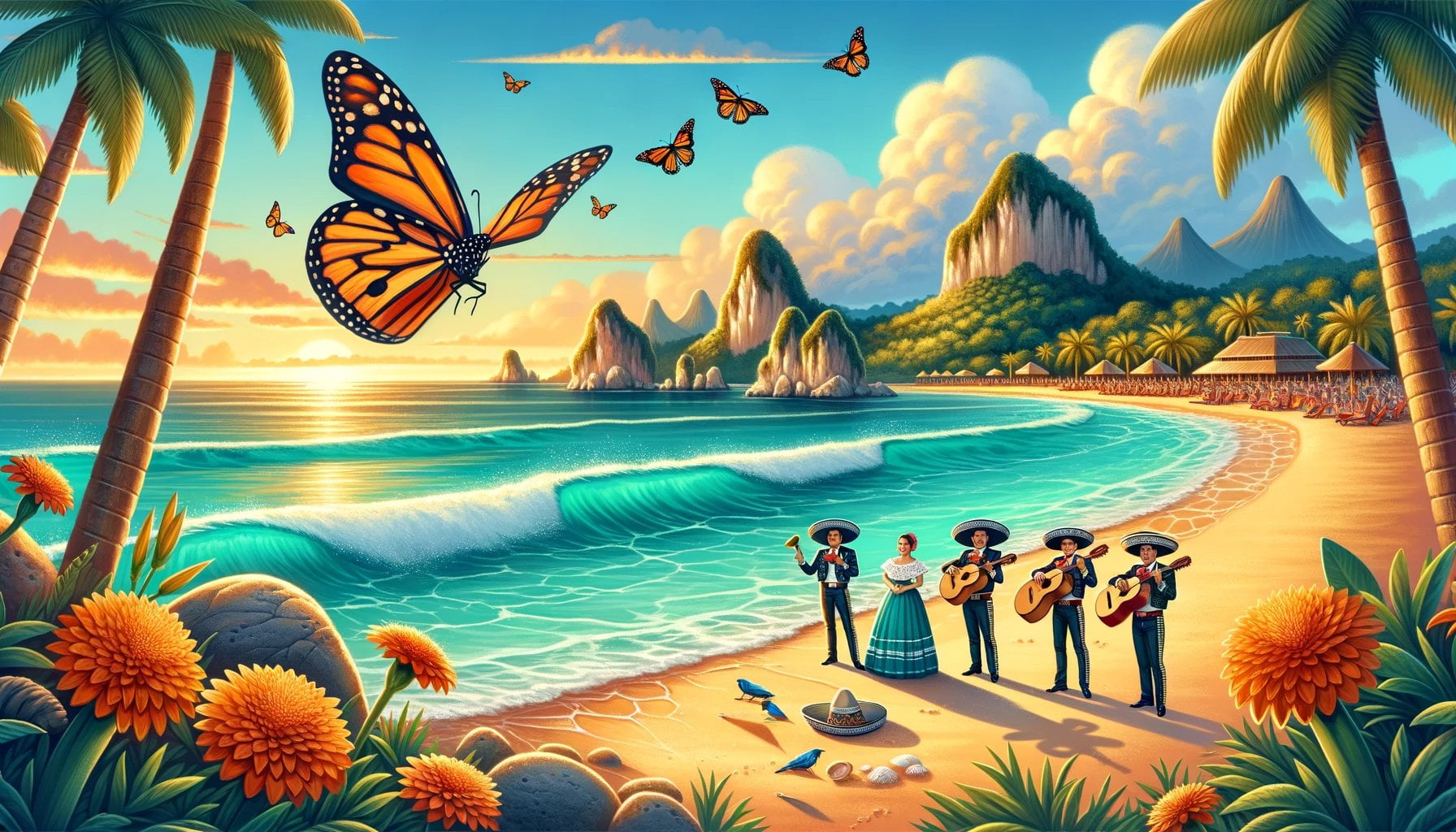
Key Takeaways:
- Mexico, officially known as the United Mexican States, became a country in 1821.
- Mexico is home to a diverse range of animals, including jaguars, pumas, iguanas, sea turtles, monkeys, parrots, and volcano rabbits.
- Mexico has a rich cultural heritage spanning over 11,000 years, with ancient civilizations such as the Olmec, Maya, Toltec, and Aztec.
- Chocolate, hot chocolate, and the national dog Xoloitzcuintli all originate from Mexico.
- Unlike in many countries, Mexican children receive presents on January 6, known as the Epiphany or Three Kings’ Day, rather than on Christmas Day.
4 Facts About Mexico
Mexico is a country rich in history, culture, and natural wonders. With its vibrant traditions and awe-inspiring landscapes, it has captivated travelers from around the world. In this article, we will delve into Mexico’s heritage and unveil four fascinating facts that showcase the country’s unique characteristics.
Fact 1: Cradle of Civilization
Did you know that Mexico is one of the six cradles of civilization? For at least 11,000 years, various ancient cultures have inhabited this land, leaving behind a lasting legacy. The Olmec, Maya, Toltec, and Aztec civilizations flourished here, each contributing to Mexico’s rich tapestry of traditions and beliefs. From the colossal stone heads of the Olmecs to the intricate pyramids of the ancient Maya, Mexico’s archaeological sites offer a glimpse into the fascinating world of these ancient civilizations.
Fact 2: Biodiversity Extravaganza
Mexico is home to a remarkable array of wildlife, making it a biodiverse hotspot. As you explore its diverse ecosystems, you may encounter magnificent creatures such as jaguars, pumas, iguanas, sea turtles, monkeys, parrots, and even the rare volcano rabbits. From the lush rainforests of Chiapas to the stunning coral reefs of the Yucatan Peninsula, Mexico’s natural wonders harbor a wealth of unique and endangered species. Protecting this biodiversity is crucial for the country’s ecological balance and the preservation of its natural heritage.
Fact 3: Gifts to the World
Mexico has given the world some incredible gifts, including culinary delights and a beloved national dog. Can you imagine a world without chocolate? Well, you have Mexico to thank for this indulgent treat. Chocolate, derived from the cacao tree, has its roots deeply intertwined with ancient Mexican civilizations. The Aztecs, in particular, believed that cacao was a divine gift, and they consumed it in the form of a frothy and spiced beverage, which we now know as hot chocolate.
Another notable gift from Mexico is the Xoloitzcuintli, also known as the Mexican Hairless Dog. This unique breed has been an integral part of Mexican culture for centuries, believed to possess healing powers and serve as companions for the deceased in the afterlife. Today, this noble and loyal dog continues to be cherished by many Mexican families.
Fact 4: Celebrating with the Three Kings
In Mexico, the holiday season doesn’t end on Christmas Day. In fact, Mexican children eagerly await January 6th, known as the Epiphany or Three Kings’ Day, to receive their presents. This tradition stems from the biblical story of the Three Wise Men bringing gifts to the baby Jesus. On this day, families gather to share a special meal, and children wake up to find their gifts left by the Three Kings.
This unique celebration adds to Mexico’s diverse tapestry of traditions and showcases the country’s strong connection to its religious heritage. It is a joyous occasion that brings families together and adds an extra touch of magic to the holiday season.
In Conclusion
Mexico’s heritage is as vast and diverse as its landscapes. From the ancient civilizations that shaped its history to the remarkable wildlife that roams its jungles, Mexico is a treasure trove of cultural and natural wonders. As you explore this fascinating country, keep these four facts in mind and immerse yourself in the richness of Mexico’s heritage.
In Mexico, did you know that there are some interesting fun facts? Explore our article on What is a fun fact in Mexico? to discover intriguing details about this vibrant country!
Mexico is renowned for its rich culture and heritage. Curious to know more about what Mexico is famous for? Dive into our article to explore the fascinating aspects that have put Mexico in the spotlight!
Discover three important facts about Mexico that you shouldn’t miss! Find out more about its history, geography, and culture by clicking on What are 3 important facts about Mexico? to satiate your curiosity.
4 Facts About Mexico’s Culture
Mexico is a country rich in cultural diversity and heritage. From its ancient civilizations to its vibrant traditions, there are countless fascinating facts about Mexican culture that will captivate your interest. In this article, we will delve into four key facts about Mexico’s culture that shed light on its fascinating heritage and captivating attractions.
Fact 1: Chocolate Originated in Mexico
One of the most intriguing facts about Mexican culture is that chocolate originated in Mexico. The ancient Mayans and Aztecs cultivated cacao beans and used them to make a bitter beverage. These early civilizations cherished chocolate and considered it a prized delicacy. Today, Mexican chocolate is still celebrated for its rich flavors and unique production methods.
Fact 2: Corn and Chilies Are Also Thanks to Mexico
Another significant contribution of Mexican culture is its association with corn and chilies. Corn, known as maize, has been cultivated in Mexico for thousands of years and holds immense importance as a staple food in Mexican cuisine. Chilies, including jalapenos and habaneros, are also native to Mexico and widely used in flavorful Mexican dishes. These ingredients not only add a distinctive taste to Mexican cuisine but also highlight the country’s agricultural heritage.
Fact 3: Music and Dance Dominate Mexican Culture
Mexican culture is known for its vibrant music and dance traditions. Music plays a central role in Mexican culture, with traditional styles such as mariachi and banda entertaining locals and visitors alike. These lively musical performances are often accompanied by folk dances, further enhancing the cultural experience. From the colorful costumes to the energetic rhythms, Mexican music and dance provide a glimpse into the country’s diverse cultural tapestry.
Fact 4: The Siesta – A Well-Known Mexican Custom
The siesta, or afternoon nap, is deeply ingrained in Mexican culture. This unique custom is observed to combat the heat of the day and improve productivity. Mexicans typically take a short break during the afternoon to rest and recharge before continuing with their daily activities. The siesta not only showcases the practicality of Mexican culture but also reflects the importance placed on well-being and work-life balance.
Key Takeaways:
– Chocolate originated in Mexico, thanks to the ancient Mayans and Aztecs.
– Corn and chilies are staple foods in Mexican cuisine, both cultivated in Mexico for thousands of years.
– Mexican culture revolves around music and dance, with traditional styles like mariachi and banda stealing the spotlight.
– The siesta, or afternoon nap, is a well-known Mexican custom, valued for its restorative effects and contribution to productivity.
SOURCES:
– CountryFAQ
– La Vivienda
4 Facts About Mexico City
Mexico City, the vibrant capital of Mexico, is an enchanting destination with a rich cultural heritage and awe-inspiring attractions. Let’s unveil four fascinating facts that shed light on this captivating city.
Mexico City Fact #1: A Thriving Metropolis
Mexico City is the fourth most populous city in the world, bustling with over 22 million residents[^1^]. Imagine the energy that permeates the streets and the diversity of voices that echo through its vibrant neighborhoods. As you explore Mexico City, you’ll be immersed in a melting pot of cultures and traditions.
Mexico City Fact #2: Spanish Echoes
As you traverse the city, you’ll be surrounded by the beautiful sound of Spanish, as Mexico City is the largest Spanish-speaking city on Earth[^1^]. From the colorful markets to the historical sites, embracing the Spanish language immerses you in the heart of Mexican culture.
Mexico City Fact #3: A Merging of Past and Present
Delve into Mexico City’s rich history and you’ll discover that it was founded on the ruins of Tenochtitlan, the capital of the Aztec Empire[^1^]. The city’s foundation stands as a testament to the merging of ancient civilizations and modern progress. Explore the ancient ruins that coexist with bustling neighborhoods, allowing you to witness the dynamic cultural blend that defines Mexico City.
Mexico City Fact #4: Volcanic Majesty
Prepare to be awe-struck by the magnificent presence of Popocatepetl, an active volcano located near Mexico City[^1^]. Up close, you’ll witness the raw power and beauty of nature, as steam rises from its majestic peaks. This natural wonder adds an air of mystique to the city and serves as a reminder of the dynamic forces that have shaped Mexico throughout history.
Key Takeaways:
- Mexico City is the fourth most populous city in the world, with over 22 million residents.
- It is the largest Spanish-speaking city on Earth.
- Mexico City was founded on the ruins of Tenochtitlan, the capital of the Aztec Empire.
- The city is located near an active volcano called Popocatepetl.
References:
[^1^]: 25 Interesting Facts About Mexico City – Top Facts
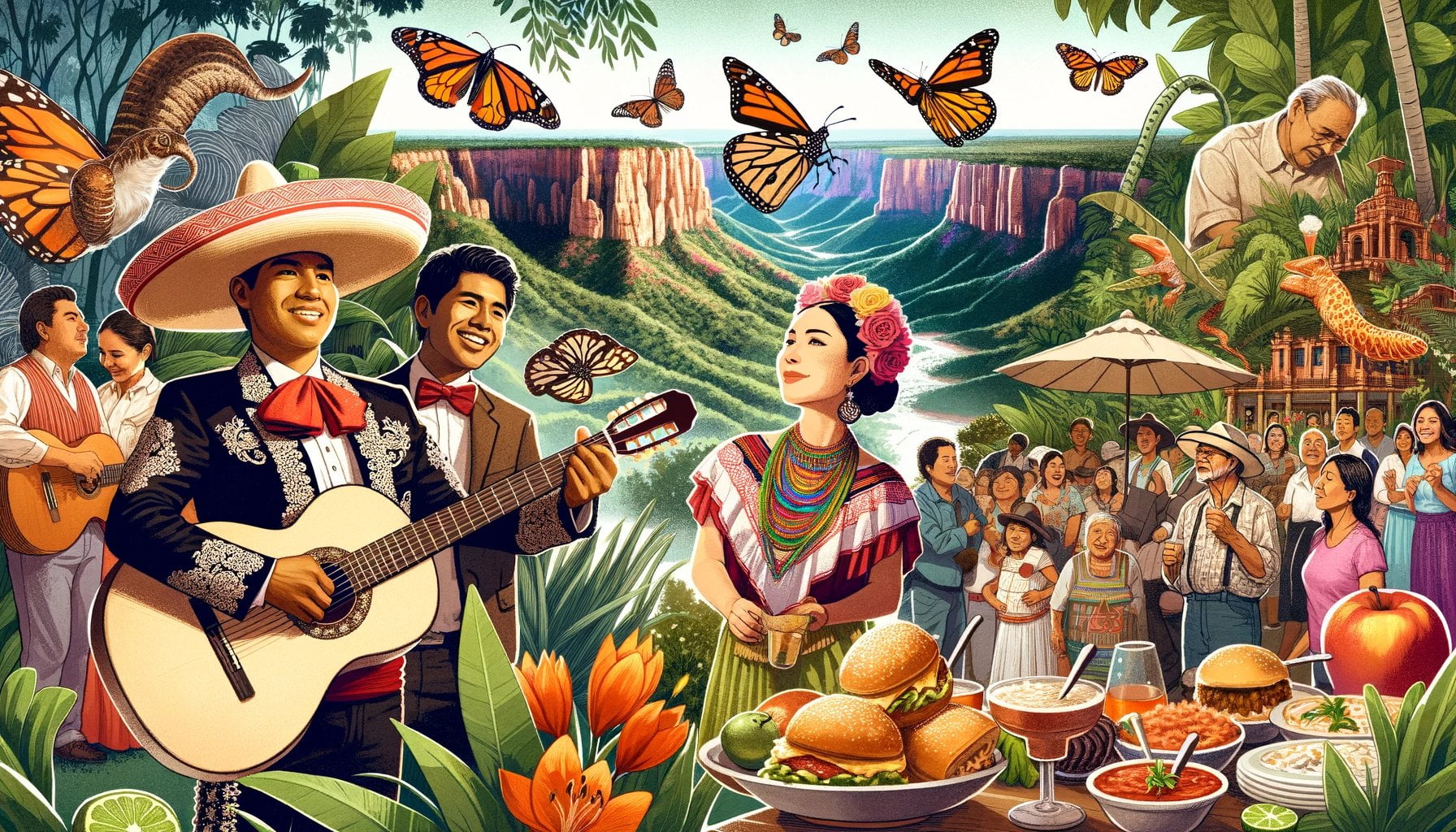
FAQ
Q1: What are some interesting facts about Mexico’s economy?
A1: Mexico is the 11th largest economy in the world and is known for its manufacturing industry, particularly in the automotive sector. It is also a major exporter of oil and a leading producer of silver and avocados.
Q2: What are some key facts about Mexico’s government?
A2: Mexico is a federal republic with a president as the head of state and government. It has a multi-party political system and is known for its separation of powers among the executive, legislative, and judicial branches. The current president is Andrés Manuel López Obrador.
Q3: Can you share some facts about Mexican culture?
A3: Mexican culture is rich and diverse, with influences from indigenous peoples, Spanish colonization, and various immigrant communities. Some notable aspects include traditional music and dance, distinctive cuisine with dishes like tacos and tamales, vibrant festivals such as Day of the Dead, and a strong emphasis on family and community.
Q4: What are some interesting facts about Mexico City?
A4: Mexico City, the capital of Mexico, is one of the largest and most populous cities in the world. It was built on the ruins of the ancient Aztec capital, Tenochtitlan. The city is located near the active Popocatepetl volcano and is home to numerous taxis and one of the world’s largest parks, Chapultepec Park.
Q5: How many people live in Mexico City?
A5: Mexico City is the fourth most populous city globally, with over 22 million people living in and around the city.
- Star Ring Trends: Etsy vs Amazon - March 28, 2025
- Boost Pollinator Habitats: Baby Blue Eyes Sustainable Farming Guide - March 28, 2025
- Protect Big Black Bears: Effective Conservation Strategies - March 28, 2025
